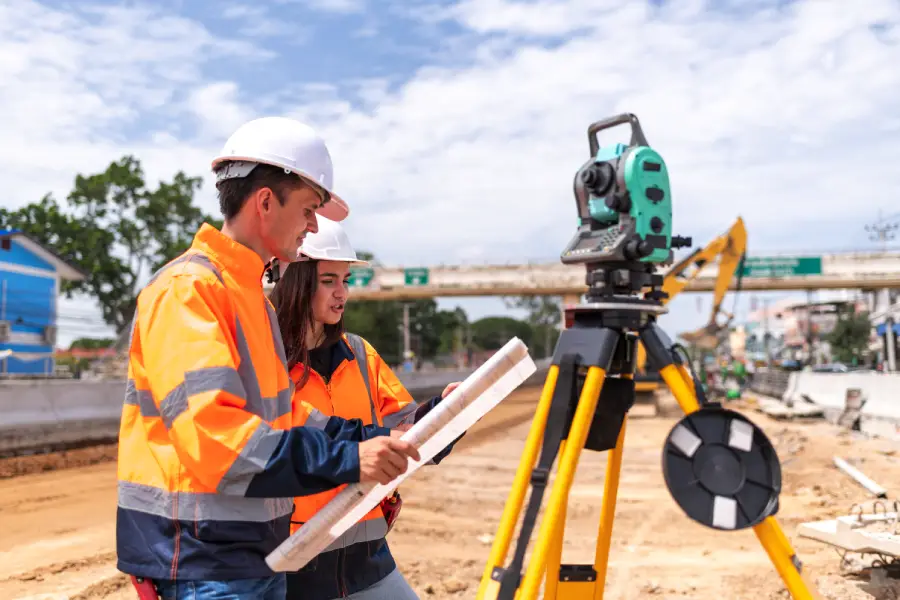Before any construction project begins, engineers need a clear picture of the land they’re working with. Slopes, natural features, and existing structures can all influence design decisions. This is where a topographic survey comes into play.
What is topographic survey in civil engineering? It is the process of mapping the natural and built features of a site, including elevations, contours, and existing structures. By providing a three-dimensional picture of the land, a topographic survey allows engineers to design projects that fit the terrain accurately, reduce risks, and meet regulatory standards. From highways and bridges to drainage systems and site developments, topographic surveys form the starting point for successful engineering work.
What Is Topographic Survey in Civil Engineering?
A topographic survey in civil engineering is a detailed measurement and mapping of the natural and man-made features of a piece of land. Unlike boundary surveys, which define property lines, a topographic survey focuses on elevations, contours, and surface features—making it one of the essential types of surveying in civil engineering and a core practice within civil engineering.
Purpose of a Topographic Survey
- To provide engineers and architects with accurate land data before design work.
- To show variations in elevation, slope, and contour lines.
- To document natural features such as trees, rivers, and rock formations.
- To capture existing infrastructure such as roads, drainage systems, and buildings.
Put simply, the purpose of a topographic survey is to transform the physical reality of a site into precise, usable data for planning and design.

Techniques and Equipment Used in Topographic Survey
Topographic surveys combine traditional surveying instruments with modern geospatial technologies such as GIS mapping and GIS in environmental management.
Common Techniques
- Total stations: Measure angles and distances electronically to create accurate 3D coordinates.
- GPS/GNSS surveying: Uses satellite data for positioning, especially useful in large open areas.
- Laser scanning (LiDAR): Captures millions of data points quickly, generating high-resolution terrain models.
- Photogrammetry: Aerial imagery from drones or planes is processed into 3D surface maps.
Equipment Typically Used
- Total stations and theodolites.
- GPS receivers and base stations.
- UAVs (drones) for aerial photogrammetry.
- Digital levels and laser scanners.
These tools allow surveyors to record both horizontal and vertical data points, which are later processed into contour maps and digital terrain models (DTMs).
Process of Conducting a Topographic Survey
A topographic survey process usually follows a systematic workflow:
- Planning
- Define the survey objectives and scope.
- Review existing maps or satellite imagery.
- Identify control points for positioning.
- Fieldwork
- Collect data points using total stations, GPS, or LiDAR.
- Record elevations, surface features, and existing structures.
- Take photographs and notes for reference.
- Data Processing
- Import field data into CAD or GIS software.
- Generate contour lines, spot elevations, and terrain models.
- Check accuracy against control benchmarks.
- Mapping and Reporting
- Produce a detailed topographic map showing contours, features, and elevations.
- Deliver digital files and drawings for engineering or architectural use.
The end product is a precise representation of the site that supports design and decision-making.
Applications of Topographic Survey in Civil Engineering
The data from a topographic survey supports a wide range of engineering activities.
Key Applications
- Site planning and design: Ensures structures fit within existing terrain.
- Infrastructure development: Used in road, bridge, and drainage system design.
- Flood risk analysis: Elevation data helps model water flow and flood zones, supporting stormwater management strategies and regulatory tools like wetland delineation.
- Utility projects: Identifies underground and surface infrastructure for coordination.
- Environmental management: Assists in erosion studies, landscaping, and restoration projects.
From small residential plots to large-scale infrastructure, topographic surveys provide the foundation for informed decision-making.
Importance of Topographic Survey in Civil Engineering
So, why is a topographic survey important? Because inaccurate or incomplete land data can lead to costly errors, delays, and design failures.
Benefits of Accurate Topographic Data
- Reduces project risk by highlighting terrain challenges early.
- Supports safety and compliance with local codes and regulations.
- Improves design efficiency by integrating reliable land information into CAD/GIS platforms.
- Facilitates stakeholder communication with clear maps and models.
In civil engineering, every successful project begins with a complete understanding of the land. Topographic surveys deliver that essential foundation.

Conclusion
So, what does topographic survey mean in civil engineering? It is the detailed mapping of land features both natural and man-made, that provides the foundation for planning, design, and construction.
From total stations to drone photogrammetry, the techniques of topographic surveying have evolved, but the purpose remains the same: to give engineers reliable data for smarter, safer, and more sustainable projects.
Accurate topographic surveys reduce risks, improve efficiency, and ensure that engineering designs align with the realities of the land. In short, they are not just a technical step—they are the backbone of modern
